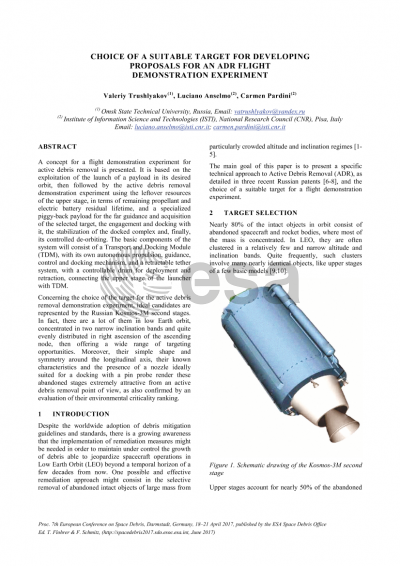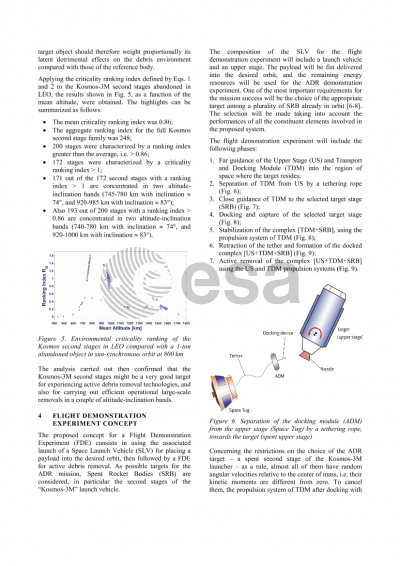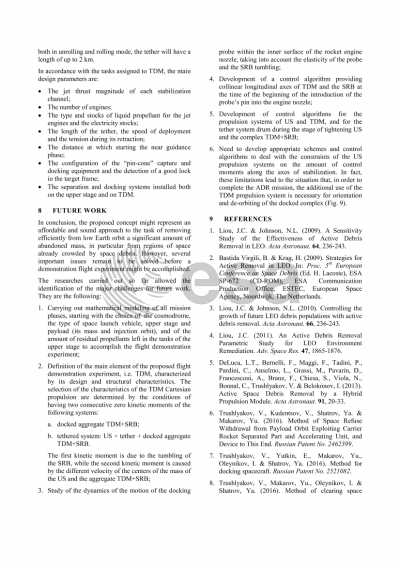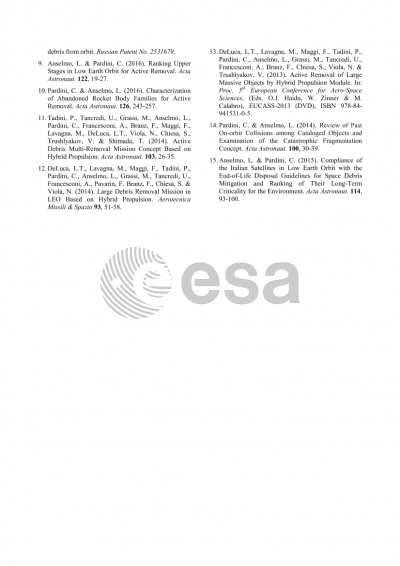Document details

Abstract
The proposed concept for a flight demonstration experiment (FDE) consists in using the associated launch of a space launch vehicle (SLV) for placing the payload into the desired orbit, then followed by a FDE for active debris removal (ADR). As possible targets (M) for the mission, spent rocket stages are considered, in particular the second stages of the "Kosmos-3M" launcher. The composition of the SLV for FDE includes a launch vehicle (LV) and an upper stage (US). The payload will be fist delivered into the desired orbit, and the remaining energy resources will be used for the ADR demonstration experiment. One of the most important requirements for the mission success is the choice of the appropriate target among a plurality of them already in orbit. This selection is made taking into account the performances of all the constituent elements involved in the proposed system. FDE includes the following steps: 1) far guidance of the upper stage and transport and docking module (TDM) into the region of space where the target resides; 2) separation of TDM from US by a tethering rope; 3) close guidance of TDM to the selected target (M); 4) docking and capture of the selected target (M); 5) stabilization of the complex TDM+M using propulsion on TDM; 6) retraction of the tether and formation of the docked complex US+TDM+M; 7) active descent maneuver of the complex US+TDM+M using the US propulsion system. Concerning the restrictions on the choice of the ADR target, as a rule, almost all of them have random angular velocities relative to the center of mass, i.e. their kinetic moments are different from zero. To cancel them, the propulsion system of TDM after docking with the target is proposed. Consequently, the design parameters of TDM impose a restriction on the possible dynamic characteristics of the potential target. After the formation of the docked complex US+NDM+M, active descent maneuvers are carried out by means of the US propulsion system; accordingly, provision of controllability, stability and quality stabilization process will be determined by the moment-centering characteristics of the bundle with respect to the US guidance and control capabilities. Another problem is represented by the possible tendency to explode of the potential targets due to the presence in the tanks of residues of fuel unused for a long time. Moreover, the active functioning of the existing US in orbit is limited due to the capacity of the electric battery, therefore, the total duration of the period of time available to carry out all the events (orbit insertion, far and near guidance, docking and capturing, transition to descent orbit) should not exceed a given duration. The general criterion for the selection of all composite systems (launch vehicle, upper stage, payload, transport and docking unit, the target) within the rocket-space complex, is a given probability of success for FDE.
Preview








